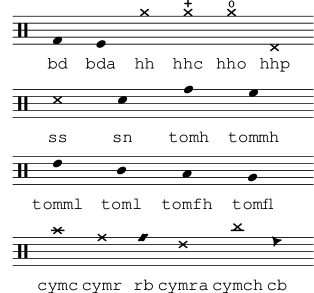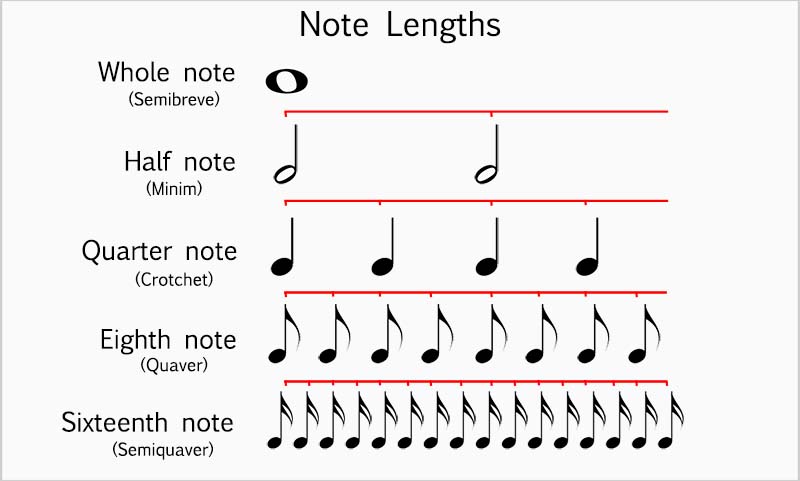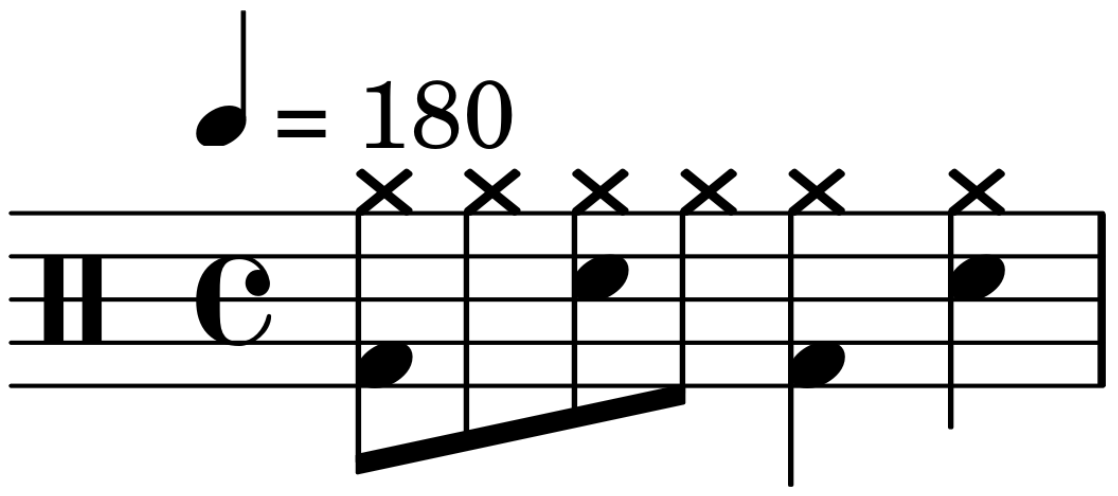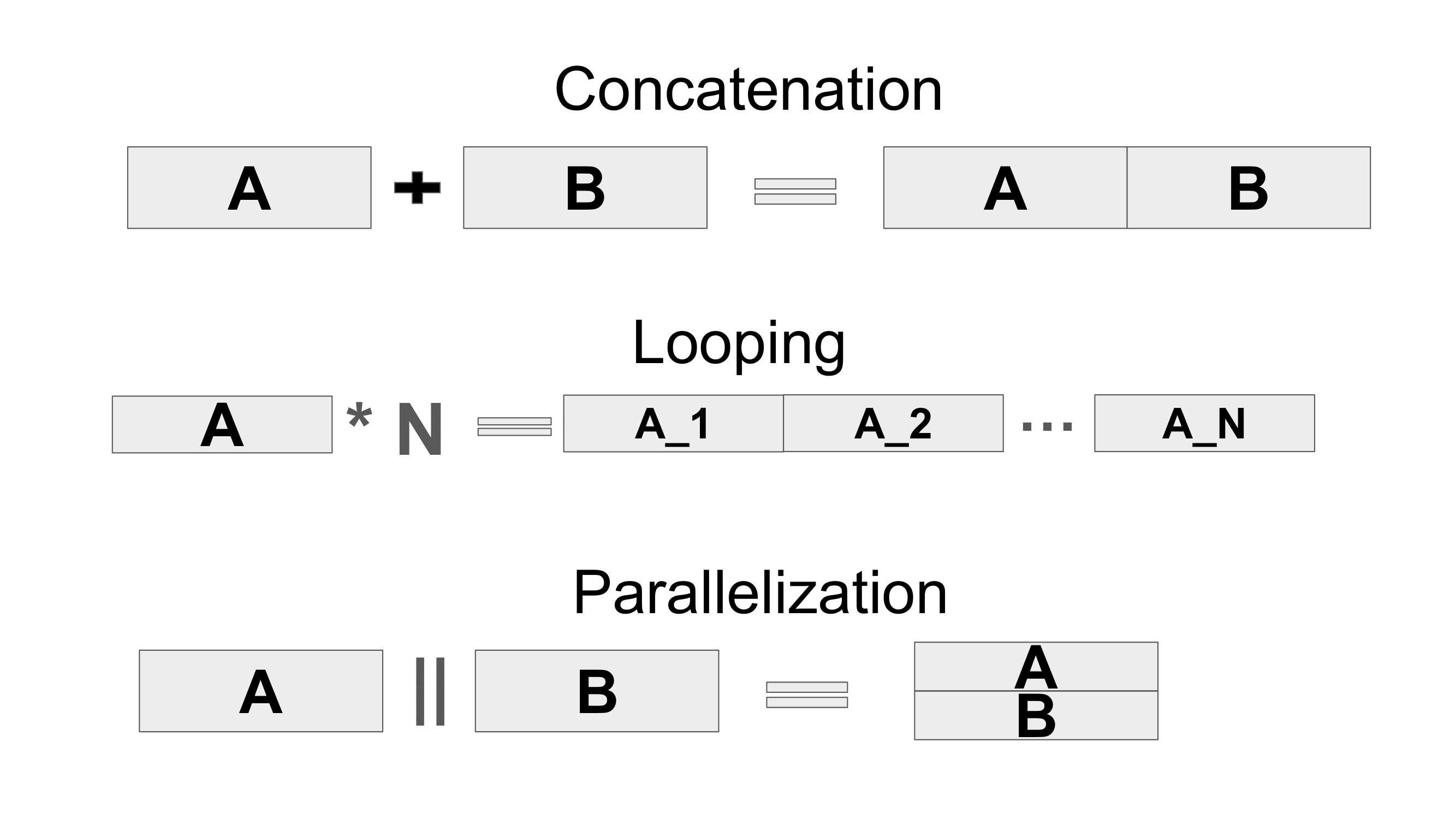A Bit of Music Theory
If you are already familiar with these concepts feel free to skip this section.
The Note
The note is a distinct isolated sound that constitutes the basis of all music. each note has its own sound and duration.In a drum music sheet the vertical position of a note relates to the instrument of that note, wether it is a hi hat, a snare drum or a bass drum.
Altough there are many standards the one we will consider is the Weinberg notation, indicated bellow.

Notice that not all these instruments are presented in the DrumLace language only the ones described in the table bellow (right above examples)
And the duration is signalled by the figure itself as presented in the image bellow.

A dotted note marks one and a half of the normal duration, for example a dotted quarter note marks 3 eighth notes.
The Meter
A meter is a recurring pattern of beats, usually indicating an accent by the musician, and marked by a vertical line.A simple meter is defined as N/4, where N is the number of quarter notes in a meter. For example the most common time, 4/4 or c, consists on 4 quarter notes.
It is important to mention the divisions of notes as stated in the image above, so that a meter can be constitued by notes of different lengths as long as the sum is the same. Note that all the meters in the image bellow are valid.

Note that the eigths notes and the sixteenth notes when placed in a row are arranged as seen in the first four notes of the last meter. A compound rhythm is defined as N/8, where N is the number of eight notes. in a compound meter a beat is divided in three parts.
So, for example in a 6/8 meter the beat is marks 3 eighth notes and the meter contains two beats.
A mixed meter is defined as different meters followed by each other.
Tempo
Tempo is simply the speed of the music, the number of beats per minute.Tupplets
Tupplets mark an irational division of a note,for example, the tripplet marks the divion of a note into 3 instead of 2.

